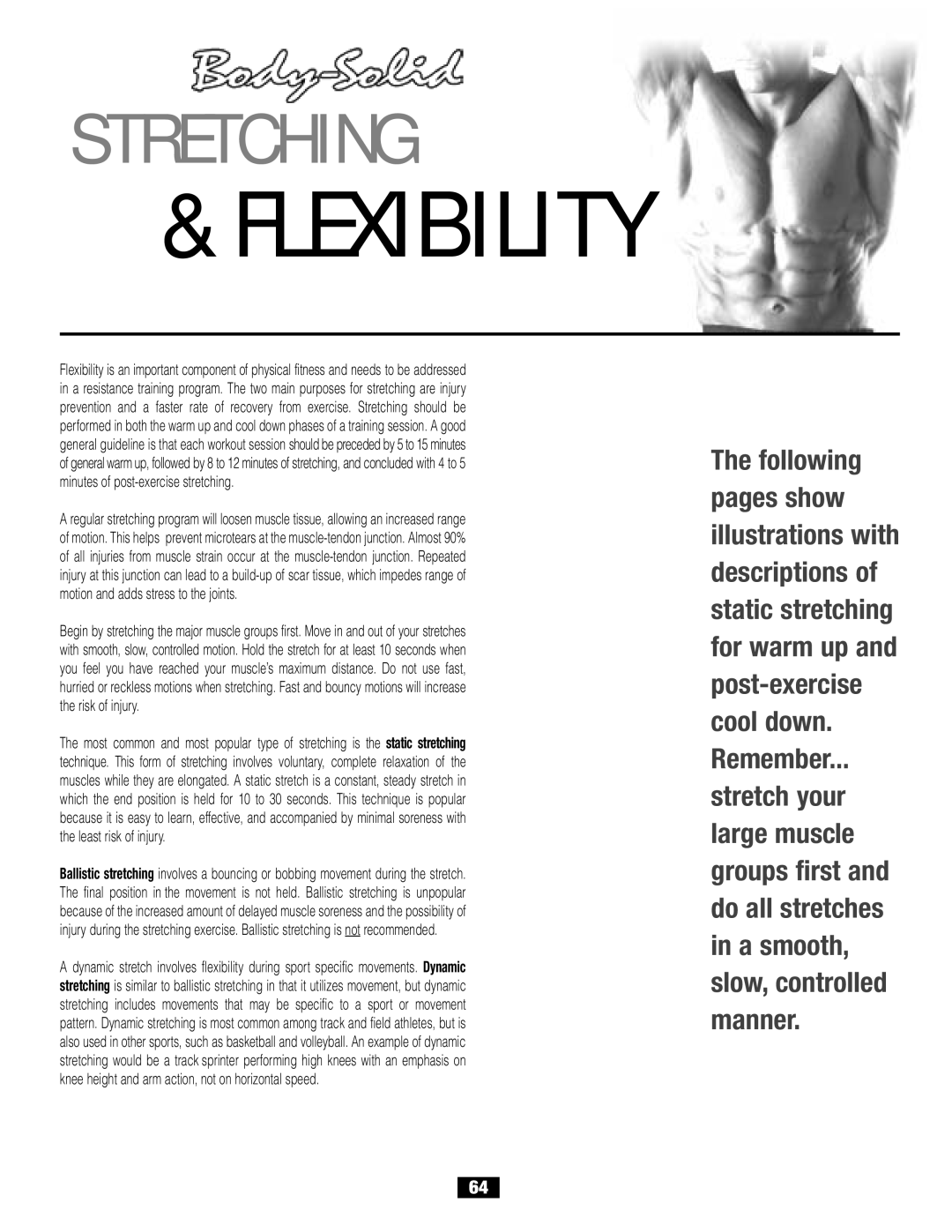G6B specifications
The Body Solid G6B is a premier piece of fitness equipment designed to provide a comprehensive strength training experience in a compact format. Ideal for both home gyms and professional fitness centers, the G6B presents numerous features and technologies that cater to a wide range of users, from beginners to advanced athletes.One of the standout characteristics of the Body Solid G6B is its dual-functionality. It allows users to perform various exercises targeting multiple muscle groups, such as the upper body, lower body, and core. It includes a chest press, leg press, lat pulldown, triceps extension, and much more, making it a versatile choice for a full-body workout regime.
The G6B is equipped with a patented press arm design that offers a natural and comfortable motion during workouts. This feature mimics the movement of free weights while providing extra support, reducing the risk of injury. The adjustable seat and backrest accommodate users of different heights, ensuring proper ergonomics for all workouts.
Another highlight of the Body Solid G6B is its innovative weight stack system. The weight stacks are designed with durable plates that provide a smooth, consistent resistance throughout the entire range of motion. Users can easily adjust the weight with a simple pin system, allowing for quick changes between exercises or sets.
The construction of the G6B is noteworthy as well. It features a heavy-duty steel frame that ensures stability and durability, along with a powder-coated finish that helps protect against wear and tear. This robust architecture supports a weight capacity that is significant in comparison to similar machines in the market.
Furthermore, the Body Solid G6B incorporates advanced safety features, including safety catches and a sturdy design that minimizes the chance of tipping over. It’s an ideal choice for those who prioritize safety during their strength training sessions.
The G6B also offers a compact footprint, which makes it suitable for limited spaces without compromising on functionality. Its multi-functional capabilities mean that users can perform a range of exercises without needing additional equipment, streamlining their workouts and enhancing efficiency.
In conclusion, the Body Solid G6B is a top-of-the-line home gym system that masterfully combines versatility, safety, and durability. Whether you’re a novice looking to start your fitness journey or a seasoned athlete aiming to refine your strength training routine, the G6B provides the features and technology needed to achieve your fitness goals effectively.

